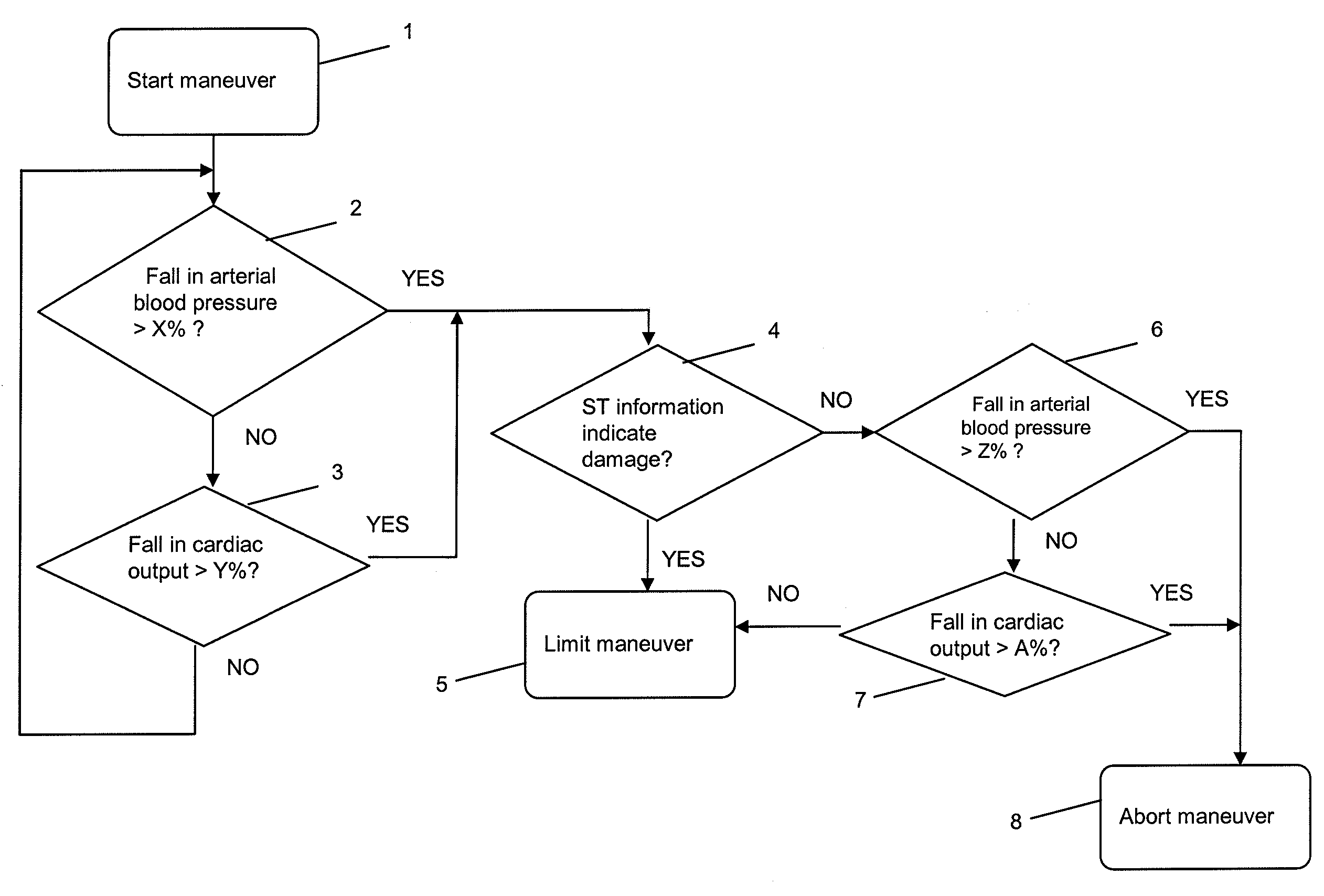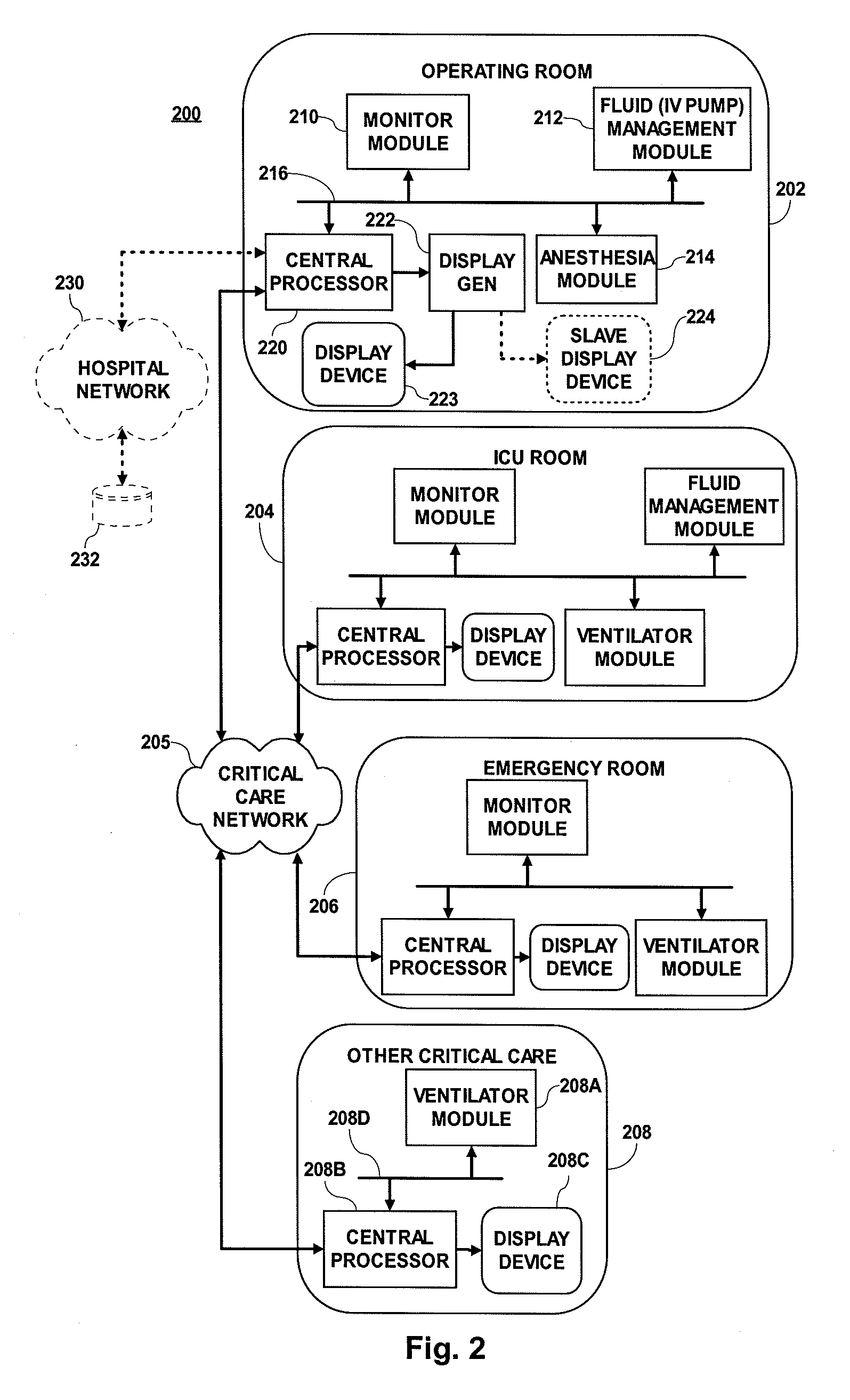System for Managing Ventilator Operation
a ventilator and operation technology, applied in the field of processing devices and display systems, can solve the problems of space, power, existing processing and display systems, described above, and the limitations of monitor processing devices and display to be able to view and control parameters
- Summary
- Abstract
- Description
- Claims
- Application Information
AI Technical Summary
Problems solved by technology
Method used
Image
Examples
Embodiment Construction
[0025]FIG. 2 is a block diagram of a hospital system 200 for monitoring and providing treatment to patients. In FIG. 2, the same four rooms are illustrated as are illustrated in FIG. 1, and those rooms contain the same medical equipment. The operating room 202 includes a patient monitoring module 210 for acquiring and processing signals derived from sensors (not shown) suitable for attachment to a patient. The operating room 202 also includes patient treatment modules: a fluid infusion (IV pump) control and management module 212 and an anesthesia module 214. These modules (210, 212 and 214) are coupled to a central processor 220 via a patient area network (PAN) 216. The central processor 220 is coupled to a display generator 222 which is coupled to a display device 223. The display generator 222 is also optionally coupled to a slave display device 224, as illustrated in phantom. The ICU room 204 includes a monitor module, a fluid management patient treatment module and a ventilator ...
PUM
 Login to View More
Login to View More Abstract
Description
Claims
Application Information
 Login to View More
Login to View More - R&D
- Intellectual Property
- Life Sciences
- Materials
- Tech Scout
- Unparalleled Data Quality
- Higher Quality Content
- 60% Fewer Hallucinations
Browse by: Latest US Patents, China's latest patents, Technical Efficacy Thesaurus, Application Domain, Technology Topic, Popular Technical Reports.
© 2025 PatSnap. All rights reserved.Legal|Privacy policy|Modern Slavery Act Transparency Statement|Sitemap|About US| Contact US: help@patsnap.com



